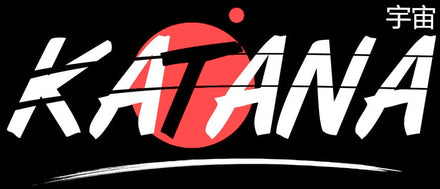The katana, a famous Japanese sword, is much more than a mere weapon. It embodies the very essence of tradition, art, and mastery. Katanas are renowned for their formidable sharpness, aesthetic beauty, and fascinating history. Behind each katana lies a skillful blacksmith, often belonging to a specific forge school. In this article, we will explore the different katana forge schools, highlighting their distinct techniques, unique styles, and the influence they have had on this ancient art.
The Bizen Forge School:
The Bizen school is one of the oldest and most respected in the art of katana forging. Founded in the 9th century, it is known for its high-quality blades with exceptional sharpness and remarkable durability. The blacksmiths of the Bizen school use a technique called "tamahagane" to produce their steel, utilizing high-quality iron ore. Bizen school katanas are often recognizable by their distinctive hamon, a wavy line formed during the steel's tempering process.
The Yamato Forge School:
The Yamato forge school is renowned for its imposing and majestic katanas. Founded in the 8th century, it stands out for using complex forging techniques that require exceptional technical and artistic mastery. The blacksmiths of the Yamato school create katanas with formidable sharpness while also possessing a unique aesthetic beauty. Their blades are often characterized by a wide and straight hamon, giving an impression of power and elegance.
The Soshu Forge School:
The Soshu school was founded in the 13th century by the renowned blacksmith Masamune, considered one of the greatest masters of katana forging. The blades of the Soshu school are known for their finesse, exceptional sharpness, and delicate beauty. The blacksmiths of this school use a technique called "soshu-kitae," which involves folding and welding different types of steel to create blades that are both strong and flexible. Soshu school katanas are often adorned with intricate patterns and feature a subtle and elegant hamon.
The Mino Forge School:
The Mino school is renowned for its versatile and well-balanced katanas. Founded in the 14th century, it has developed efficient forging techniques that allow the production of high-quality blades in a relatively short time. Mino school katanas are characterized by their elegant shape, sharp edge, and ability to absorb shocks. The blacksmiths of the Mino school place great importance on the balance between blade hardness and flexibility, creating katanas suitable for different combat styles.
Conclusion:
The different katana forge schools in Japan each have their own history, unique techniques, and distinctive style. Whether it's the Bizen, Yamato, Soshu, or Mino school, each has contributed to the evolution of this millennia-old art and left a lasting mark on the world of katana forging. Each katana is a work of art, forged with care and passion, carrying the legacy of these schools that have preserved this tradition throughout the centuries. Whether you're a history enthusiast, an art lover, or a sword aficionado, the different katana forge schools offer a captivating glimpse into the richness and diversity of this ancient art.















